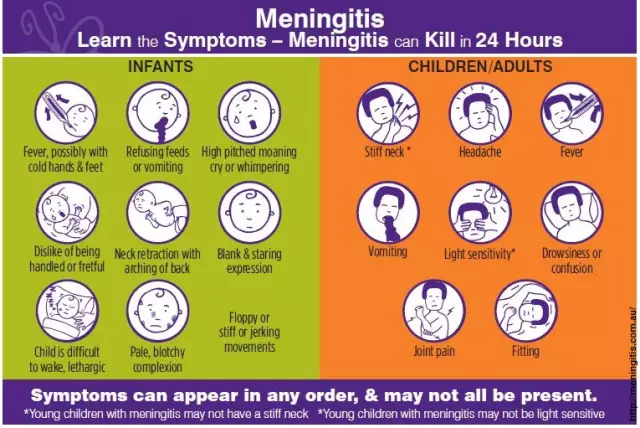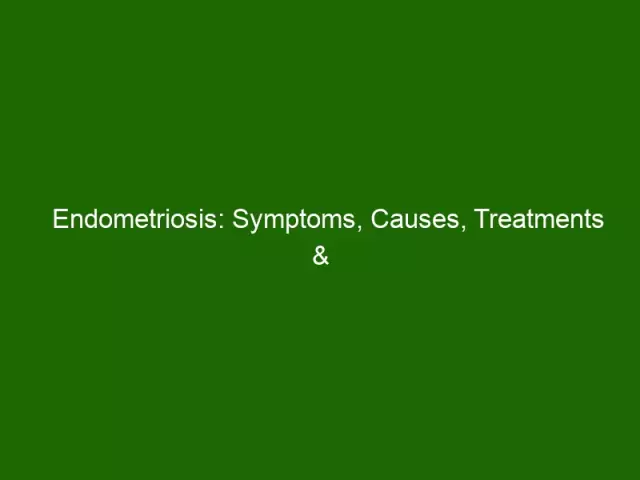- Author Curtis Blomfield [email protected].
- Public 2023-12-16 20:44.
- Last modified 2025-01-23 17:01.
Enteroviral meningitis is a rather extensive group of diseases, each of which is accompanied by inflammation of the meninges of the brain of varying severity. Interestingly, such disorders are considered seasonal, since the largest number of outbreaks of the disease occurs in spring and summer. Children are most susceptible to the effects of a viral infection, and the younger the sick child, the more dangerous the consequences can be.
Enteroviral meningitis and its causes

In this case, the cause of the inflammatory process is a rather large group of enteroviruses, which, in fact, is evidenced by the name. In most cases, meningitis develops as a result of the activity of the Coxsackievirus type A or B, as well as ECHO. Transmission of infection can be carried out by airborne droplets.
However, the patient's immunity is of great importance in such a disease. That is why children under the age of nine are most often ill, since during this period the immunethe system is just evolving.
As for the incubation period, it averages seven days.
Enteroviral meningitis in children: photos and symptoms

In most cases, the disease begins acutely. Suddenly there is a strong fever - the body temperature rises to 38-39, and sometimes 40 degrees. As the disease progresses, all the symptoms characteristic of meningitis appear.
The sick child suffers from weakness and dizziness, as well as severe headaches. Subsequently, intracranial pressure increases. Enteroviral meningitis is accompanied by loss of appetite and severe vomiting, which, unfortunately, does not bring visible relief. Along with this, increased sensitivity to light develops - the patient feels comfortable only in the twilight.
There is also such a characteristic symptom of inflammation as stiff neck - the patient cannot press his chin to his chest. Signs of meningitis can also include the appearance of a rash on the body, disruption of the digestive system, diarrhea, myalgia. By the way, in newborns, an increase in pressure inside the skull is accompanied by swelling and pulsation of the large fontanel.
What is the danger of enteroviral meningitis?
In fact, such a disease is quite easy to treat. With proper care and medical attention, the main symptoms of meningitis disappear after a few days, and after 10 days there is a complete recovery.
Group of largestnewborns are at risk, as the infection affects the entire body. Complications include myocarditis, enterocolitis. In the most severe cases, acute liver failure develops with further tissue necrosis.
Enteroviral meningitis and its treatment

If you have a fever, severe headache and vomiting, seek help immediately. The diagnosis of meningitis can only be made by a doctor after receiving the results of tests and some studies. In most cases, the presence of inflammation can be confirmed with a spinal puncture. By the way, after this procedure, patients usually feel relief, as the removal of excess cerebrospinal fluid reduces pressure inside the skull.
A sick person needs strict bed rest. The main symptoms are relieved with the help of analgesics, antipyretics and anti-inflammatory drugs, in particular drugs containing ibuprofen. In the first few days, the introduction of prednisolone is indicated. In some cases, the doctor prescribes sedative medications, as well as immunomodulatory drugs that help the body fight the infection on its own.






